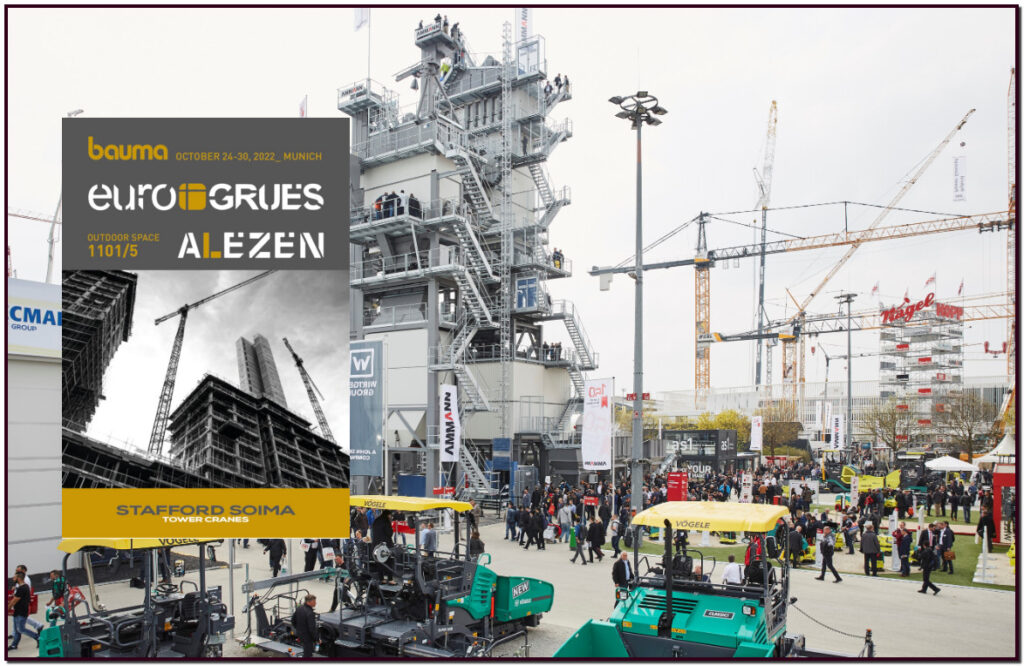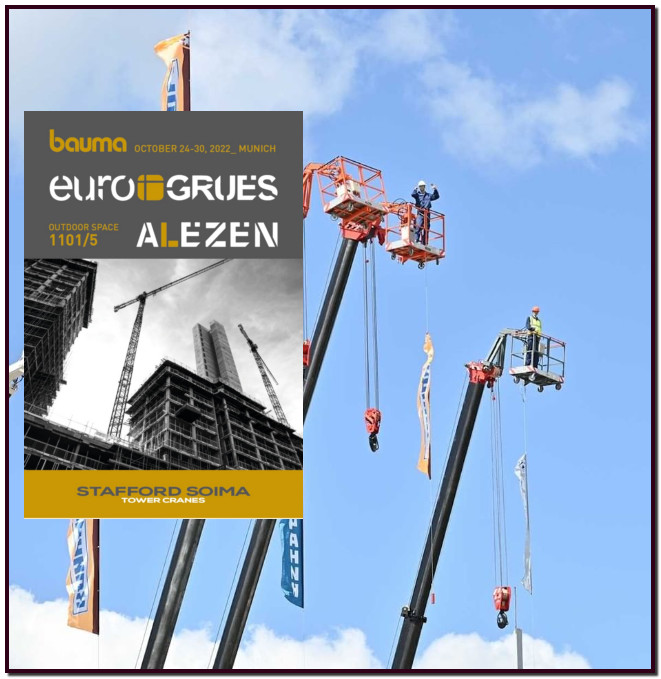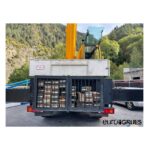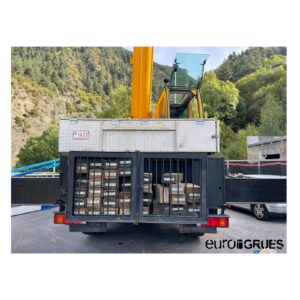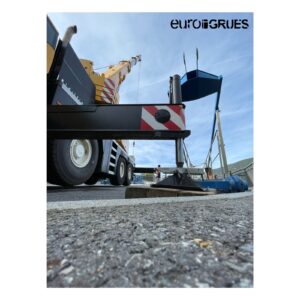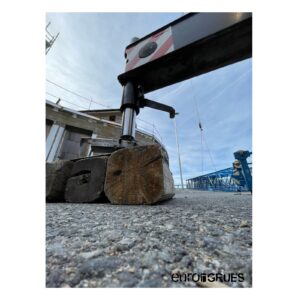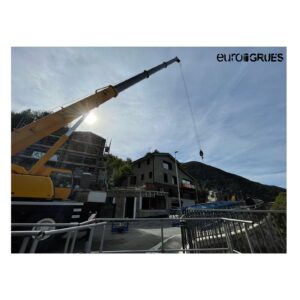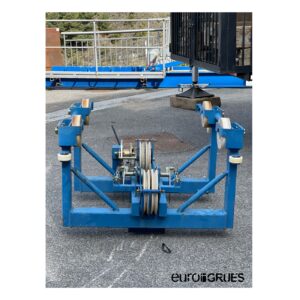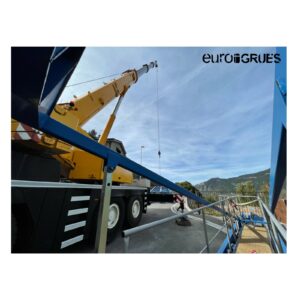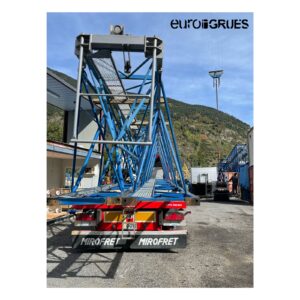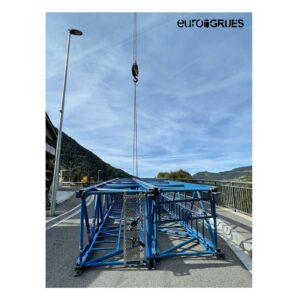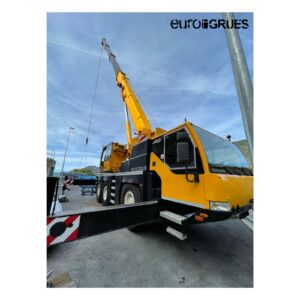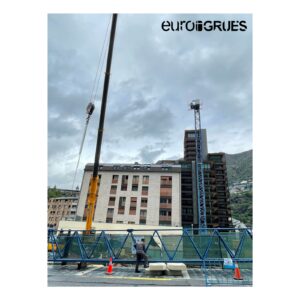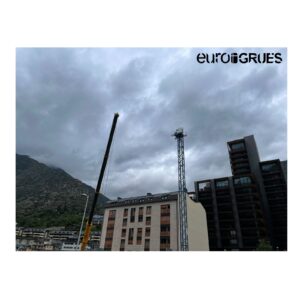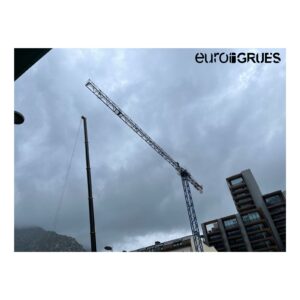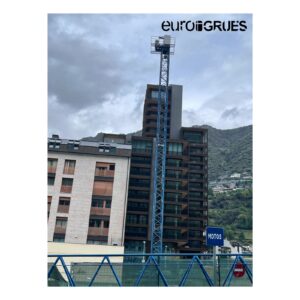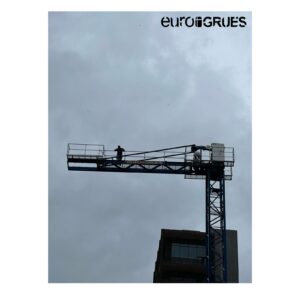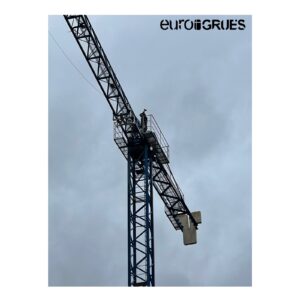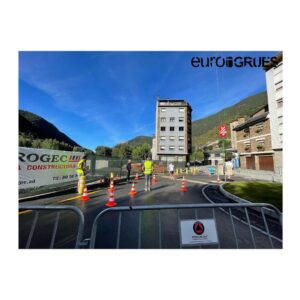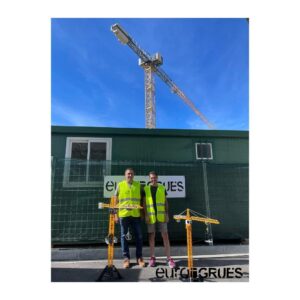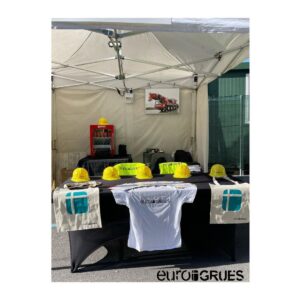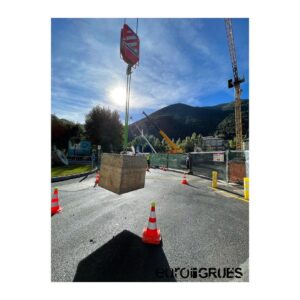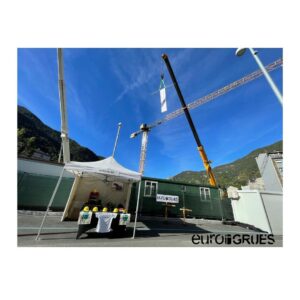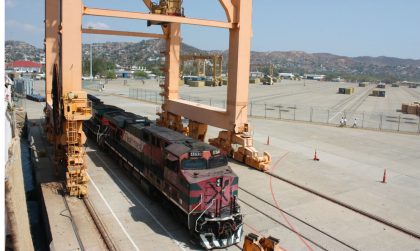Auteur/autrice : admin
EUROGRUES INTERNACIONAL ANDORRA. Cada vez queda menos para la próxima edición de Bauma 2022
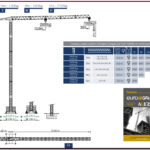
EUROGRUES INTERNACIONAL ANDORRA. Cada vez queda menos para la próxima edición de Bauma 2022, que este año tendrá lugar del 24 al 30 de octubre en Múnich (Alemania). Desde EUROGRUES INTERNACIONAL participaremos en esta reconocida feria. Si vas a estar allí, ven a vernos para conocer nuestras novedades.
Ello es debido a que esta edición será la ocasión perfecta para hacer la presentación oficial de nuestra reformulación de familias de grúas torre, y presentar además nuevos modelos.
BAUMA2022 | Construction processes and materials for the challenges of our time Carbon dioxide capture during cement production
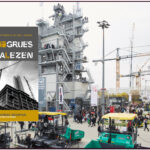
BAUMA2022 Construction processes and materials for the challenges of our time
Carbon dioxide capture during cement production.
Preparing and reusing demolition materials.
Increasing attractiveness for workers.
Climate change, finite natural resources, the lack of specialist staff: the global construction machinery industry too must face up to today’s big problems. Modern construction processes and materials could be part of the solution. bauma, which will take place in Munich from October 24–30, 2022, will provide a comprehensive overview of the latest technologies and major developments in this area.
Sourcing and processing building materials, the construction process itself, maintenance and the demolition of buildings and other items of infrastructure result in significant carbon dioxide emissions. Cement production for example is responsible for eight percent of global CO2 emissions. According to the British think tank Chatham House, the cement industry would be the third largest CO2 emitter after China and the U.S. if it were a country. Only a third of the emissions results from burning fossil fuels such as coal or petroleum coke: the largest part is released when limestone is broken down as part of the process.
CCU and CCS in the cement industry
“If we want to make significant improvements here, some fundamental technological changes need to take place,” says Christoph Danner, an expert for construction machines and construction material systems at Verband Deutscher Maschinen- und Anlagenbau e. V. (VDMA). In his opinion, one option offering great potential is to capture CO2 and then use it (Carbon Capture and Utilization (CCU)) or to store it safely and on a permanent basis in deep-lying geological layers of rock (Carbon Capture and Storage (CCS)). “This way, 95 percent of the carbon dioxide released during cement production could be captured,” said Danner. The first CO2 capturing facility for cement production in Germany is currently being built in Rohrdorf. According to the plans, it will go into operation by the end of June 2022 and then capture two tons of carbon dioxide every day which can then be used by the regional chemical industry.
Conserving resources through recycling
In addition to measures to protect the climate, the construction industry also faces calls to save raw materials in the future. Recently, sand has become the focus of public attention. After all, it is the most widely used material, yet it is becoming increasingly scarce. One way to conserve resources is to process demolition materials on location using modern crushing and screening technologies so that they can be reused there and then in new construction projects. “This will not only ease the burden on natural sources. It will also help to avoid transporting materials, greenhouse gas emissions, noise, and air pollution in densely populated urban areas,” says Alexandre Marchetta, the President of the Committee for European Construction Equipment (CECE, Brussels).
Modern technologies are making construction professions more attractive
As a further challenge, the global construction boom requires an increase in productivity. “Given the lack of specialist staff, this problem can no longer be solved simply by using ‘more people’,” says Tim-Oliver Müller, Director of Hauptverband der Deutschen Bauindustrie e.V. Instead, the focus should be on digital working methods, innovative products and machines and the opportunities offered by industrial and, increasingly, AI-assisted processes. “Areas which young people are interested in and which would increase not only productivity but also the attractiveness of the sector,” says Müller. In his opinion, modern construction machinery too plays an important role. “We are already seeing increasing numbers of apprentices who are learning to drive construction machines, for example. This indicates that the profession is becoming much more attractive again. This is mainly down to the fact that driver cabins are becoming increasingly digital and more comfortable,” says the sector expert.
Less but highly qualified personnel
At the same time, the construction machinery industry is aiming to produce just as much or even more than before with fewer specialists. “Serial construction and 3D concrete printing offer opportunities for this,” says the VDMA expert Danner. He adds: “Serial construction has been an established process for many years. With largely ready-made construction products, it allows construction work to take place with fewer workers on site. Additive manufacturing, which is becoming increasingly advanced will have a similar effect. Here, the use of printing robots allows staff savings.”
One of the key topics at bauma 2022
“The construction methods and materials of tomorrow” is one of the key topics at bauma. At the world’s leading trade fair for construction machinery, building material machines, mining machines, construction vehicles and construction equipment, key market players will present their latest solutions. The bauma Forum also provides an opportunity to discuss current trends.
Bauma TALK | Interview with Renke Deckarm. In our #bauma TALK about the way to zero emission
Bauma TALK | Interview with Renke Deckarm. In our #bauma TALK about the way to zero emissions, Renke Deckarm from the European Commission emphasizes how important it is to work together: „Europe can lead the way, but Europe cannot do it alone.“ Find out what type of dialogue he expects from the #constructionindustry.
Desmuntatge grua per l’equip d’EUROGRUES INTERNACIONAL. Obra acabada satisfactòriament amb la grua Comansa 5 LC

Desmuntatge grua per l’equip d’EUROGRUES INTERNACIONAL. Obra acabada satisfactòriament amb la grua Comansa 5 LC, ubicada als Cortals d’Encamp al Principat d’Andorra. Ara toca repassar-la i pròximament la tornarem a muntar en una altra obra del Principat d’Andorra.
Muntatge de la grua Comansa 5LC-5010 que va dur a terme Eurogrues internacional Andorra al centre d’Escaldes-Engordany
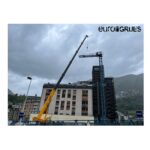
Muntatge de la grua Comansa 5LC-5010 que va dur a terme Eurogrues internacional Andorra – França – Espanya el passat dimarts 13 de setembre al centre d’Escaldes-Engordany al Principat d’Andorra.
Durant aquest cap de setmana EUROGRUES ha participat en la Fira Multisectorial d’Encamp
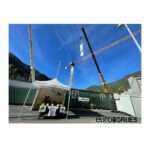
Durant aquest cap de setmana EUROGRUES ha participat en la Fira Multisectorial d’Encamp en la que ha dut a terme diferents activitats com el 1r concurs al millor gruista d’Andorra i grues per als més petits.
Moltes gràcies al @comuencamp per aquesta iniciativa.
.
.
#enfiratencamp #comudencamp #liebherr #liebherrcranes #cranes #gruatorre #gruetour #towercrane #1erconcursgruistesandorr #gruistesandorra #gemconsandorra #eurogruesinternacional #eurogruesandorra
Liebherr completa su gama de grúas telescópicas sobre orugas con la LTR 1040
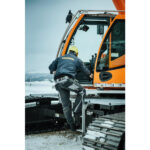
Liebherr completa su gama de grúas telescópicas sobre orugas con la LTR 1040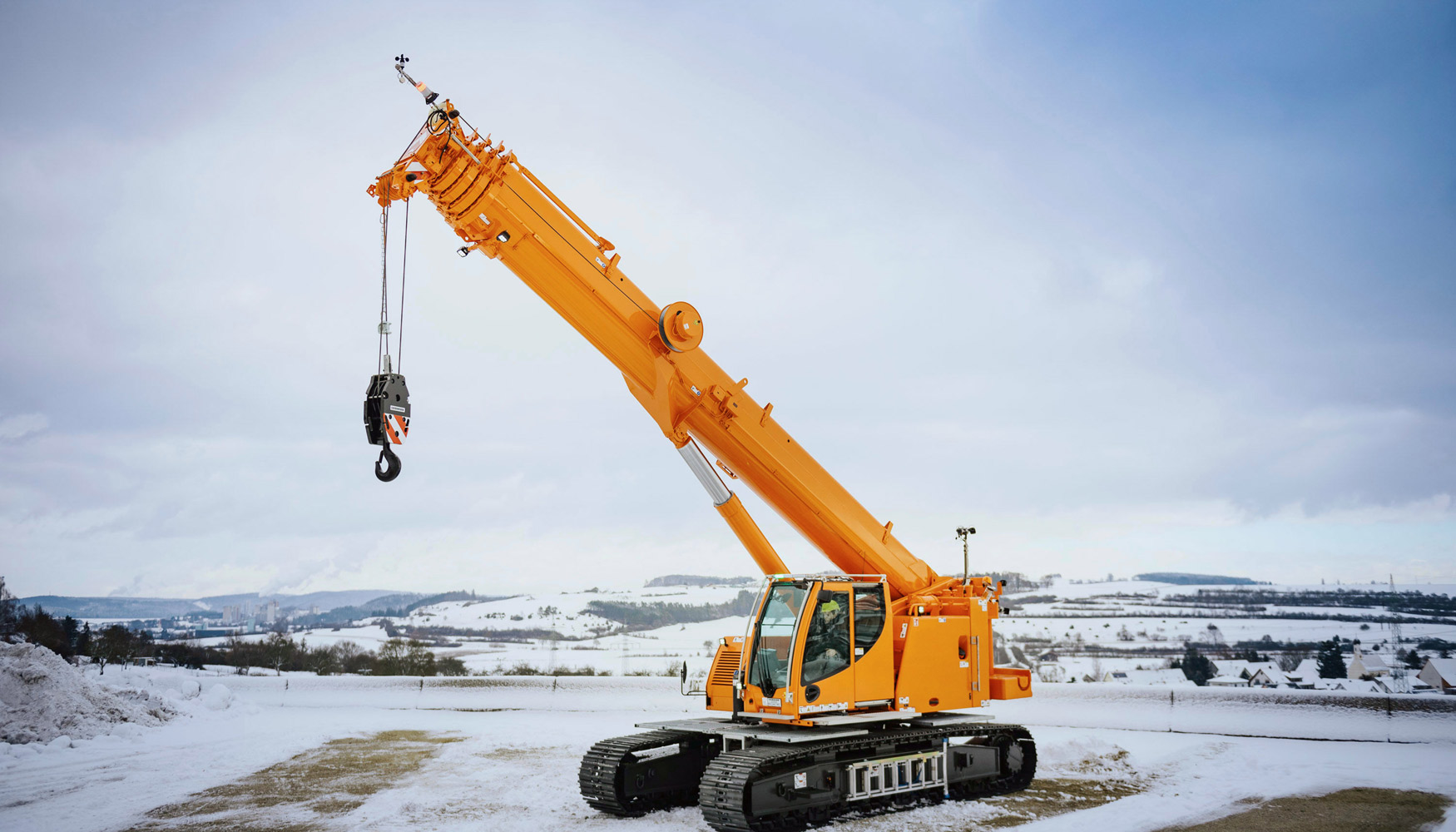
Liebherr satisface las necesidades de sus clientes y en el futuro ofrecerá la LTR 1040, una versión de menor peso de su grúa telescópica sobre orugas de 60 toneladas, la LTR 1060. Liebherr amplía, así, su gama de productos de grúas telescópicas sobre orugas debido a que, en muchos proyectos y licitaciones, se precisan de este tipo de grúas en la categoría de las 40 toneladas. Si fuera necesario, los contratistas pueden actualizar la LTR 1060 convirtiéndola en una LTR 1040.
La diferencia principal con la LTR 1060 es el contrapeso notablemente reducido: en total, la LTR 1040 pesa 20 toneladas menos. En el chasis se han eliminado 10 toneladas del contrapeso central y en la superestructura se han reducido 10 toneladas de contrapeso. Este nuevo prototipo de grúa ofrece una excelente relación calidad/precio en la categoría de las 40 toneladas: las capacidades de carga a radios medios superan ampliamente a las de sus competidoras y la pluma telescópica de 40 metros es, en torno a, un 30% más larga, con respecto a lo que suele ser habitual en esta categoría. De ahí que la mayoría de los trabajos de la grúa puedan realizarse sin plumín abatible.
Una pluma telescópica más larga y potente
Las altas capacidades de carga son decisivas, sobre todo en el montaje de piezas prefabricadas que es uno de los principales ámbitos de aplicación de las grúas telescópicas sobre orugas. La LTR 1040 puede elevar, por ejemplo, una carga de hasta 8,6 toneladas a un radio de 10 metros en todo su rango operativo. Cuando la pluma está completamente levantada (ángulo máximo), la capacidad de carga llega a las 18,8 toneladas con un telescópico extendido a 30,7 metros, mientras que, con la pluma totalmente extendida a 40 metros, la capacidad de carga es de 10 toneladas. Con el plumín abatible doble de 16 metros de largo, la LTR 1040 alcanza una capacidad máxima de elevación de 55 metros con una capacidad de carga de 3,1 toneladas. Se trata, en todos los casos, de valores excepcionales que, hasta el momento, no se habían alcanzado en la categoría de las 40 toneladas.
Transporte económico y rápida disponibilidad
La LTR 1040 se puede transportar de forma especialmente económica, ya que solo pesa 43,5 toneladas, incluido su contrapeso de 5,6 toneladas. Durante el desplazamiento, las cargas por eje permanecen por debajo de las 10 toneladas en el caso de vehículos tractores de 3 ejes y semirremolques de 4 ejes. Si se desmonta el contrapeso de 5 toneladas, el peso de la LTR 1040 se puede reducir hasta las 38,5 toneladas, lo que significa que tiene un peso bruto de transporte de menos de 60 toneladas.
El accionamiento de las orugas se retrae a una anchura de 3 metros, durante el desplazamiento. Gracias a la escasa altura de la grúa, de tan solo 3,15 metros, se pueden utilizar semirremolques estándar que resultan muy económicos.
Idónea para el montaje de piezas prefabricadas
Gracias a su diseño y a su construcción, la LTR 1040 es idónea para el montaje de piezas prefabricadas. Con un plumín de montaje de 2,5 metros de largo y un segundo mecanismo de elevación, es posible realizar montajes en modo de 2 pastecas. La carga transportada y que es soportada por el plumín de montaje, se transmite a la segunda pasteca de la pluma telescópica. De esta forma, se pueden girar las piezas prefabricadas hasta la posición adecuada y se pueden desplazar con la oruga al lugar de montaje.
La LTR 1040 puede elevar hasta 17,7 toneladas, montando 4 reenvíos en la pasteca del plumín de montaje. En la LTR 1040, el runner puede elevar hasta 9 toneladas, montándole dos reenvíos.
Altos estándares de seguridad
Una de las grandes ventajas de las grúas sobre orugas es la posibilidad de desplazarse con la carga completa en el gancho. Para sacar el máximo partido posible a esta característica, Liebherr pone a su disposición tablas de capacidad de carga según las inclinaciones del suelo. La sensible escala, que va desde 0,3, 0,7, 1,5, 2,5 y 4 grados, garantiza capacidades de carga óptimas incluso en terrenos irregulares. En obras en las que el espacio es reducido, la LTR 1040 puede trabajar con los soportes de las orugas retraídos a una anchura de 3 metros. Para ello, hay disponibles tablas de capacidades de carga especiales.
El acceso a la cabina del operador ha sido diseñado para que sea especialmente seguro y cómodo. El operador de la grúa puede acceder a su lugar de trabajo sin necesidad de preocuparse de la posición de la superestructura, gracias a unas escaleras plegables, a una plataforma fija incorporada sobre las orugas y a un peldaño extraancho en la cabina. No es necesario pisar las cadenas. Asimismo, la LTR 1040 ya cumple con el estándar de seguridad que se aplicará en el futuro, cuando entre en vigor, en los próximos años, las disposiciones de la nueva revisión de la norma EN13000.
TEXTO PROPIEDAD: https://www.interempresas.net/Elevacion/Articulos/350821-Liebherr-completa-su-gama-de-gruas-telescopicas-sobre-orugas-con-la-LTR-1040.html
México: Puertos de Coatzacoalcos y Salina Cruz reciben propuestas para mejorar sus operaciones

México: Puertos de Coatzacoalcos y Salina Cruz reciben propuestas para mejorar sus operaciones
En septiembre pasado, Grupo T21 dio a conocer que las https://www.eurogrues-internacional.com/Administraciones Portuarias Integrales (API) de Coatzacoalcos y Salina Cruz habían solicitado casi 1.000 millones de pesos mexicanos a la Secretaría de Hacienda y Crédito Público (SHCP) para renovar su equipamiento portuario, en aras de hacer más eficiente el manejo de contenedores en ambos recintos.
De este modo, API Coatzacoalcos se encuentra desarrollando la licitación pública consolidada, correspondiente al equipamiento de los dos puertos que forman parte del Corredor Interoceánico del Istmo de Tehuantepec (CIIT), donde la entidad ha recibido cinco propuestas.
De acuerdo con la API, la oferta económica más baja fue realizada en conjunto por las empresas Red de Maquinaria y Diseño y Construcciones Civiles por un monto de 251.418.407 pesos; seguida de la oferta de Bustrain Global, que ascendió a 265.306.469 pesos.
La tercera oferta, según el acta levantada en el proceso de licitación, fue la realizada por la empresa Soluciones Integrales para Trituración, por un monto de 273.783.837 pesos. Todas las propuestas son sin el Impuesto al Valor Agregado (IVA).
De este modo, las propuestas más elevadas fueron presentadas por Liebherr México con 474.468.674 pesos; y por Maquinaria Innovativa de Veracruz, que ascendió a 683.932.645 pesos, según el acta de la API.
La inversión programada para 2021 en Coatzacoalcos es de 136 mdp de recursos propios que comprende el anticipo del equipamiento mayor; mientras que, para el año 2022, es por 358,4 mdp para la adquisición del equipamiento menor y accesorios, así como la liquidación del equipamiento mayor (2 grúas móviles sobre ruedas tipo MHC), financiado con recursos fiscales.
El programa incrementará la capacidad instalada del muelle 5, de 9.627 a 280.061 contenedores de 20 pies (TEU) por año, además de garantizar un seguro y óptimo manejo de esta carga proyectada con la consolidación del CIIT, de acuerdo con la dependencia.
El Puerto de Salina Cruz pretende mejorar las condiciones operativas en las instalaciones actuales del muelle de contenedores, incrementando la capacidad instalada en la operación de 36.583 a 280.061 TEU por año.
TEXTO PROPIEDAD: https://portalportuario.cl/mexico-puertos-de-coatzacoalcos-y-salina-cruz-reciben-propuestas-para-mejorar-sus-operaciones/
Liebherr entrega la primera unidad, a nivel mundial, de la grúa LTM 1110-5.1 a Grúas Roxu
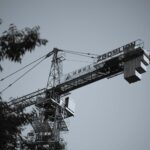
Liebherr entrega la primera unidad, a nivel mundial, de la grúa LTM 1110-5.1 a Grúas Roxu
Grúas Roxu, de Meres (Asturias, España), se ha convertido en la primera empresa, a nivel mundial, en adquirir la grúa móvil LTM 1110-5.1 de Liebherr. La pasada edición de la feria Bauma, en el 2019, fue el escenario elegido para la presentación oficial de esta grúa, de 110 toneladas.
La compañía asturiana Grúas Roxu ya cuenta, en su parque de grúas, con la primera unidad de la grúa móvil LTM 1110-5.1 de Liebherr. La operación de compra se hizo efectiva durante la última edición de Bauma y, desde el primer momento, tenían claro que la razón de esta adquisición estaría fundamentada en conceptos tan sencillos, pero, a la vez, tan necesarios en una grúa como “capacidad de carga y movilidad: dos requisitos fundamentales para nosotros, acordes a nuestra empresa y situación”, afirma José Manuel García, presidente del grupo Grúas Roxu. “Consideramos que, técnicamente, es la grúa más completa en todos sus parámetros, dentro de las de su clase, por lo que marca una clara diferencia. Grúas Roxu siempre busca lo mejor en cada caso y esta fue la principal razón para adquirir dicha grúa”, continúa diciendo José Manuel García.
El viaje de la LTM 1110-5.1 desde Alemania a España, fue muy diferente de lo previsto. Dicho transporte se realizó en pleno estado de alarma, provocado por la crisis sanitaria del Covid-19, por lo que hubo que sortear diferentes retos logísticos.
El campo de acción de la LTM 1110-5.1, disponible en una gran variedad de configuraciones, es muy amplio. “En nuestro caso, dicha grúa está destinada a realizar trabajos en refinerías, industrias químicas y, en las ciudades, se ajusta perfectamente a todo tipo de actividades”, asegura el presidente de Grúas Roxu.
GRÚA INNOVADORA, ROBUSTA Y CON PESO TOTAL REDUCIDO
Liebherr lanzó la LTM 1110-5.1 al mercado en el 2019, bajo el lema “Prepared for every task”. Durante el proceso de diseño de esta grúa móvil de 5 ejes los ingenieros de Liebherr fueron un paso más allá, otorgando una especial importancia a garantizar un bajo peso bruto y, por lo tanto, un alto nivel de movilidad. Al mismo tiempo, se pretendió conseguir la mayor capacidad de carga posible, gracias a su pluma telescópica. Desde el primer momento, Grúas Roxu, entre otros clientes, colaboró en el proceso de desarrollo, aportando valiosas ideas y experiencias, basadas en la práctica. ¿Cuál fue el resultado?. Un modelo innovador, robusto y con peso total reducido, perfecto para ser usado en todo el mundo de la forma más económica y flexible posible y, por supuesto, sin prescindir de una gran fortaleza.
La grúa móvil LTM 1110-5.1, con carga máxima de 110 toneladas, transporta 13,4 toneladas de contrapeso y puede desplazarse, ágilmente, con cargas de 12 toneladas por eje.
Asimismo, dispone de un sistema de cambio ágil para las placas de contrapeso, el cual le garantiza una máxima flexibilidad. La base de apoyo VarioBase® le aporta mayor potencia y seguridad, al tiempo que se trata de una máquina especialmente ecológica, gracias al sistema ECOdrive y el ECOmode de Liebherr que mejora las propiedades de conducción, ahorrando combustible y reduciendo las emisiones acústicas. Por otro lado, la LTM 1110-5.1 está equipada con una de las plumas más versátiles de esta clase de grúas, lo que le proporciona una capacidad de carga excepcional. Además, se le puede acoplar un plumín lateral, disponible de 10,8 a 19 metros, el cual se puede ajustar hidráulicamente entre 0° y 40°. “Con una pluma telescópica de 60 metros de largo y un chasis ajustado en dimensiones, se convierte en una grúa muy versátil y, a su vez, con una capacidad de carga muy estimable”, afirma el presidente Grúas Roxu.
“Ser pioneros, en el mundo, en adquirir la grúa LTM 1110-5.1 nos hace sentir orgullosos de contar, en nuestro parque de maquinaria, con una grúa de este tipo. Gracias a la LTM 1110- 5.1 de Liebherr vamos a ganar en eficiencia y competitividad, además de que se ha convertido, en poco tiempo, en el foco de interés de nuestros clientes, lo que nos llevará a plantearnos sustituir, sucesivamente, algunas de nuestras grúas de este segmento por otras como ésta”, concluye José Manuel García.
GRÚAS ROXU
Grúas Roxu comenzó su actividad profesional en 1979 y, actualmente, opera en toda España. Su sede central está ubicada en Meres, en la zona centro de Asturias, y desde 2013 dispone de una sucursal para Centroamérica, ubicada en Costa Rica. Asimismo, ha desarrollado, con éxito, proyectos en Uruguay, Chile, Ucrania, Polonia, Alemania y Francia.
En sus instalaciones, de más de 100.000 metros cuadrados, cuentan con un considerable parque de maquinaria de última generación, incluyendo un total de 100 grúas móviles Liebherr. De éstas destacan como buques insignia, 2 unidades de 1.200 toneladas de capacidad de carga del modelo LTM 11200 y LTR 11200, además de 2 unidades de la grúa sobre orugas, LR 1600/2. Desde los años 80, Grúas Roxu confía en la calidad y servicio de Liebherr, por ser “un referente no sólo en la calidad de sus productos, sino también por la profesionalidad de sus especialistas y por el eficaz servicio postventa, una condición fundamental para nuestro tipo de actividad”, afirma José Manuel García.
Durante sus más de 40 años de experiencia, Grúas Roxu ha desarrollado con éxito multitud de proyectos, en diferentes sectores como montajes y mantenimientos industriales, obras públicas, proyectos marítimos, parques eólicos, transportes especiales, además de diversos trabajos que requieren elevación y transporte, al máximo nivel.

